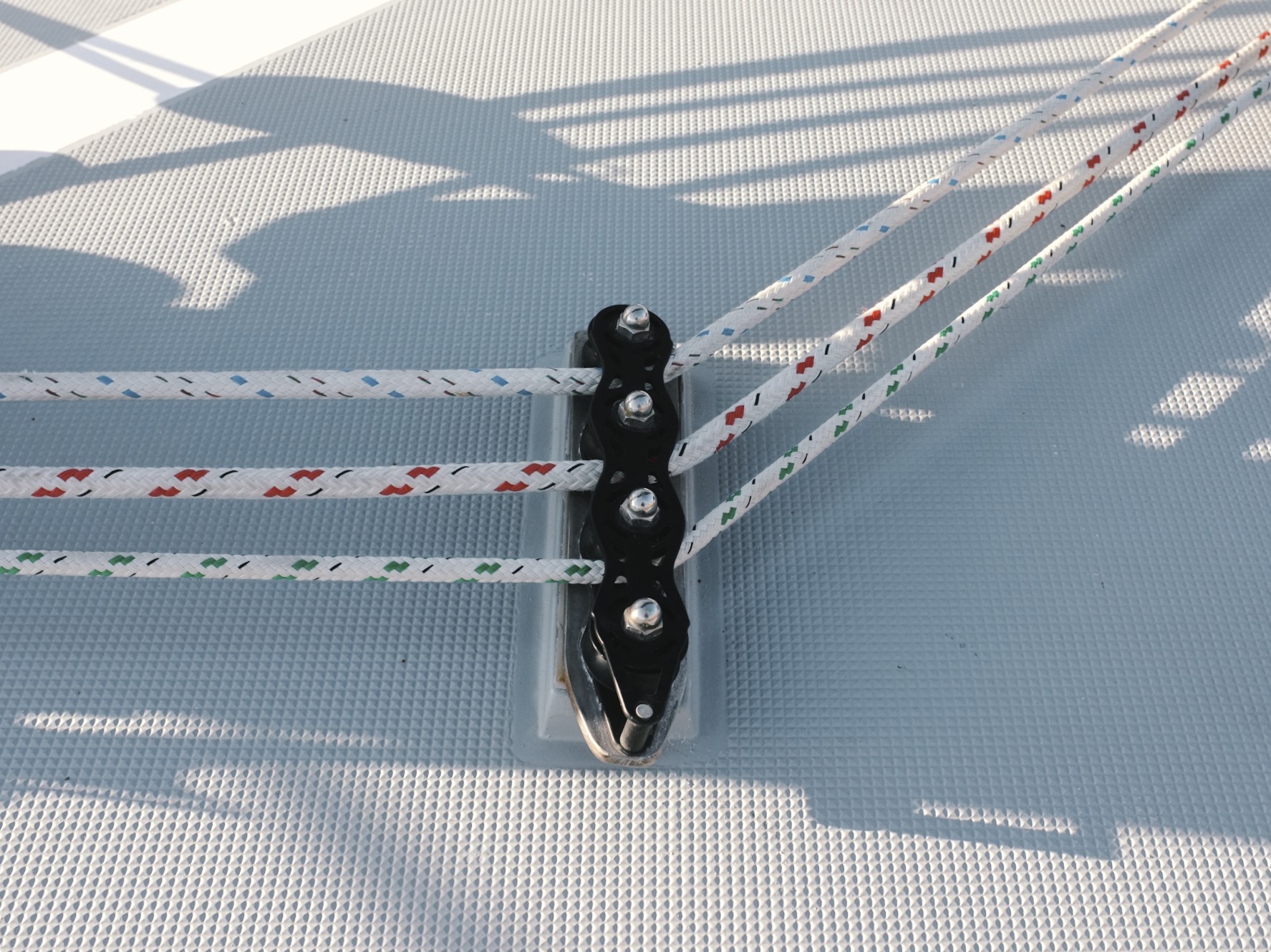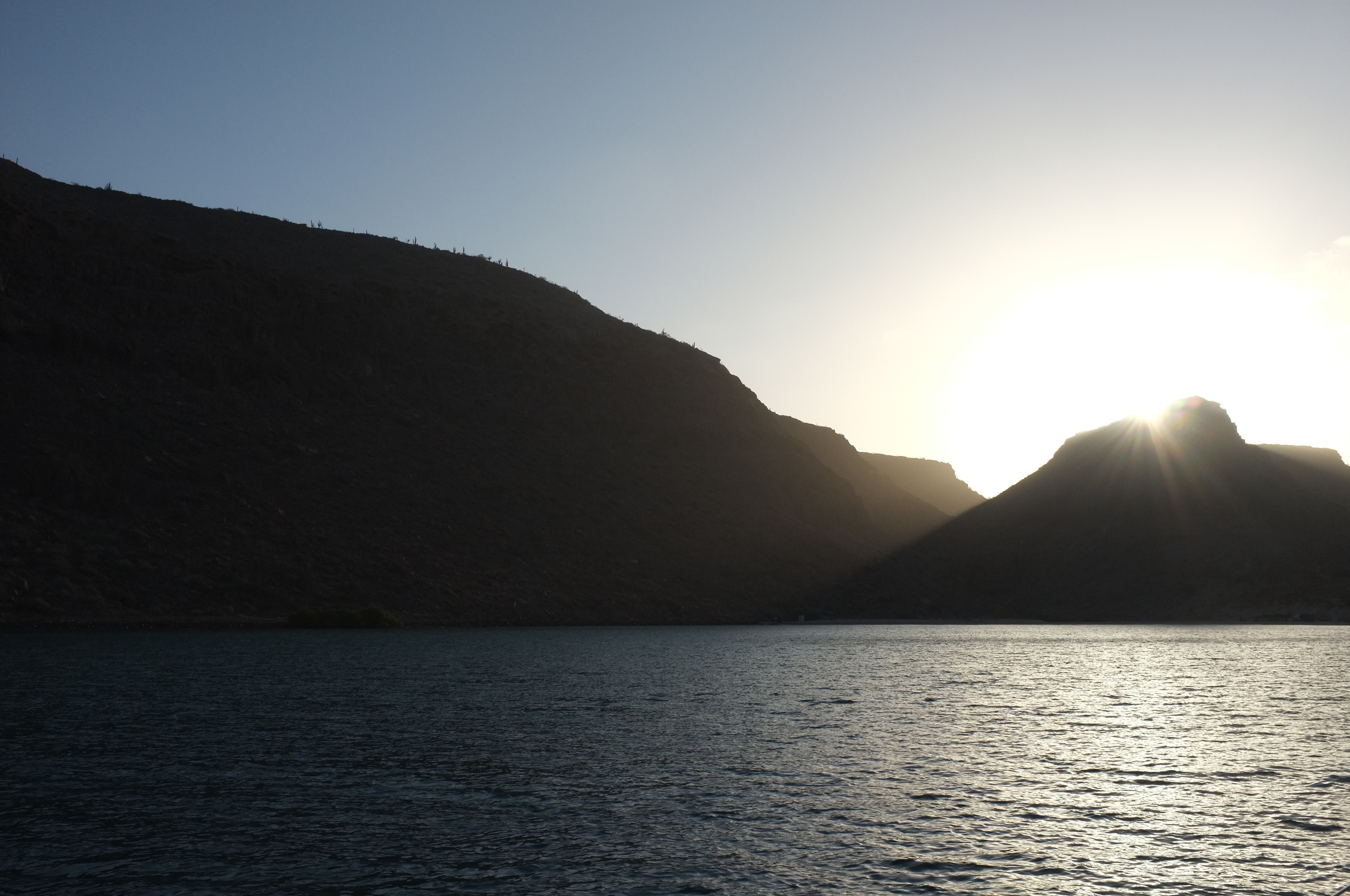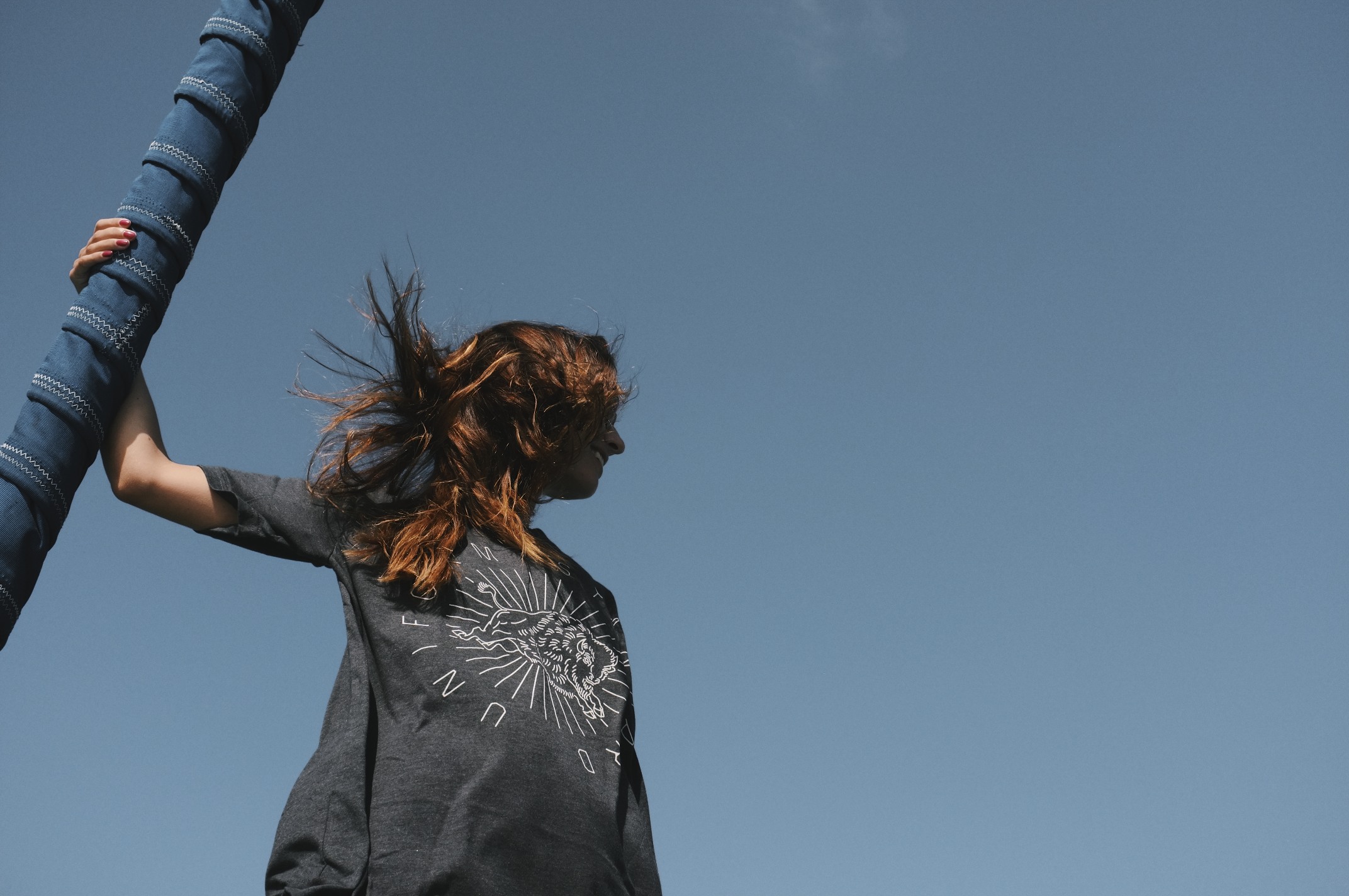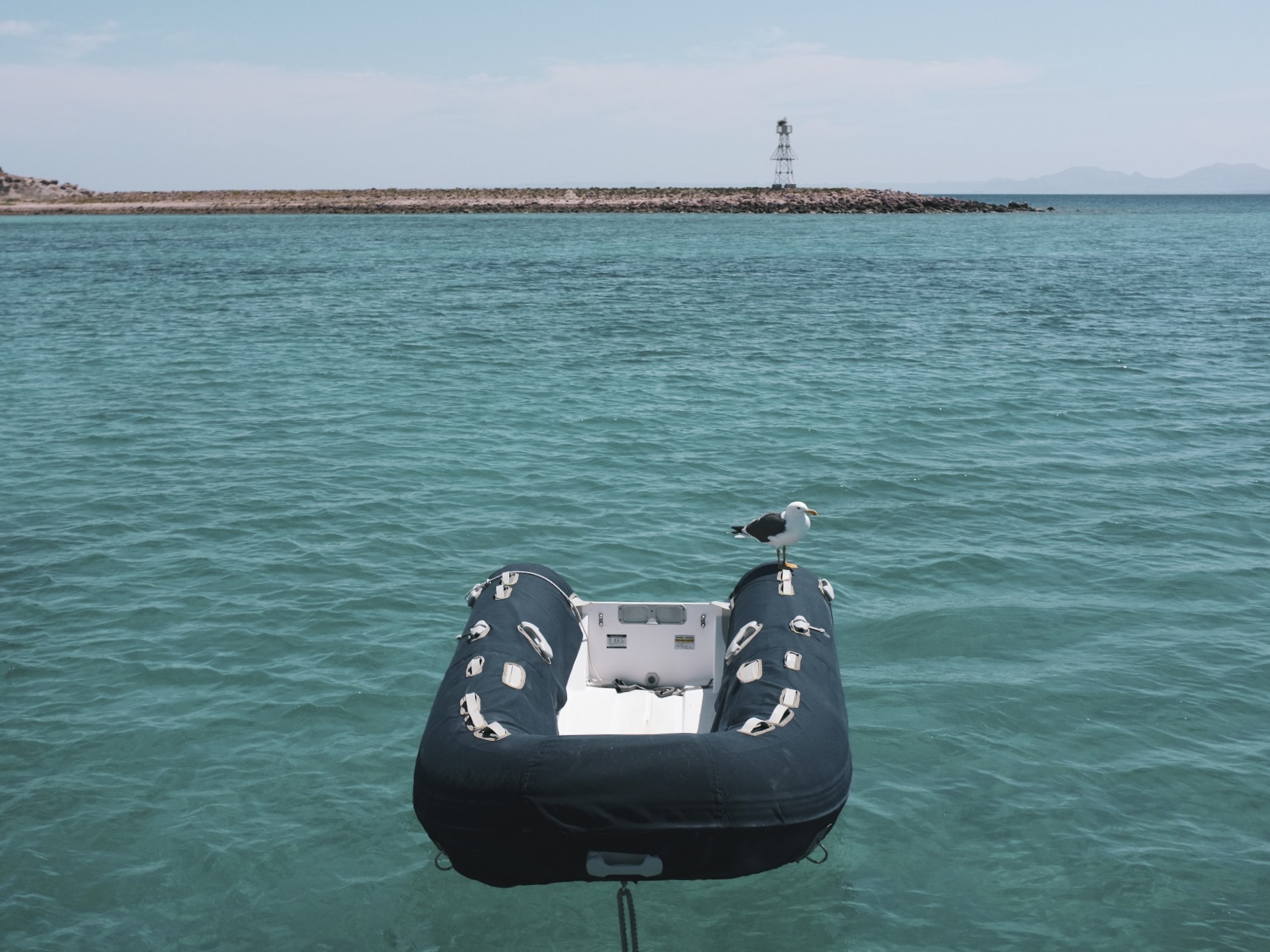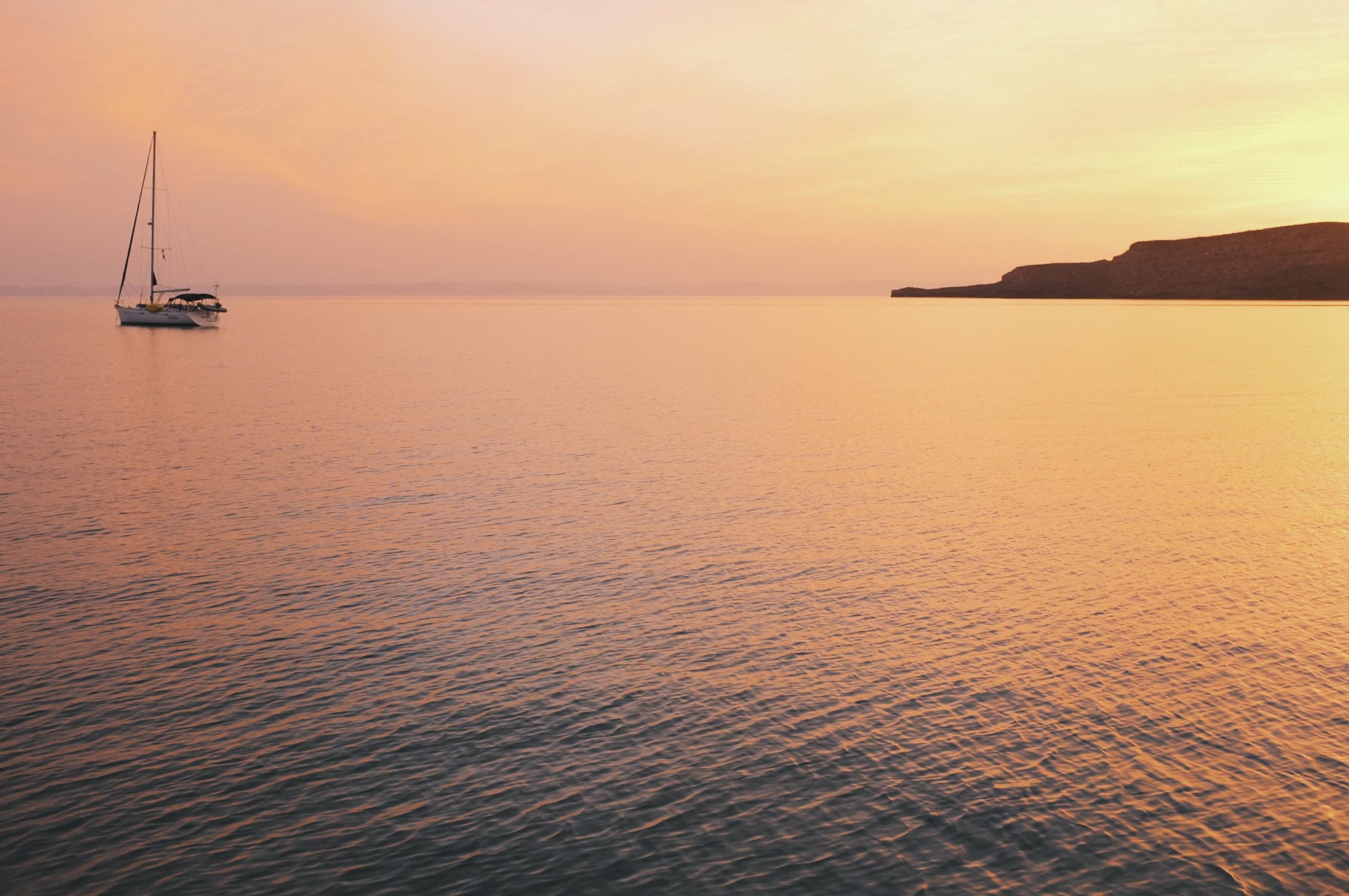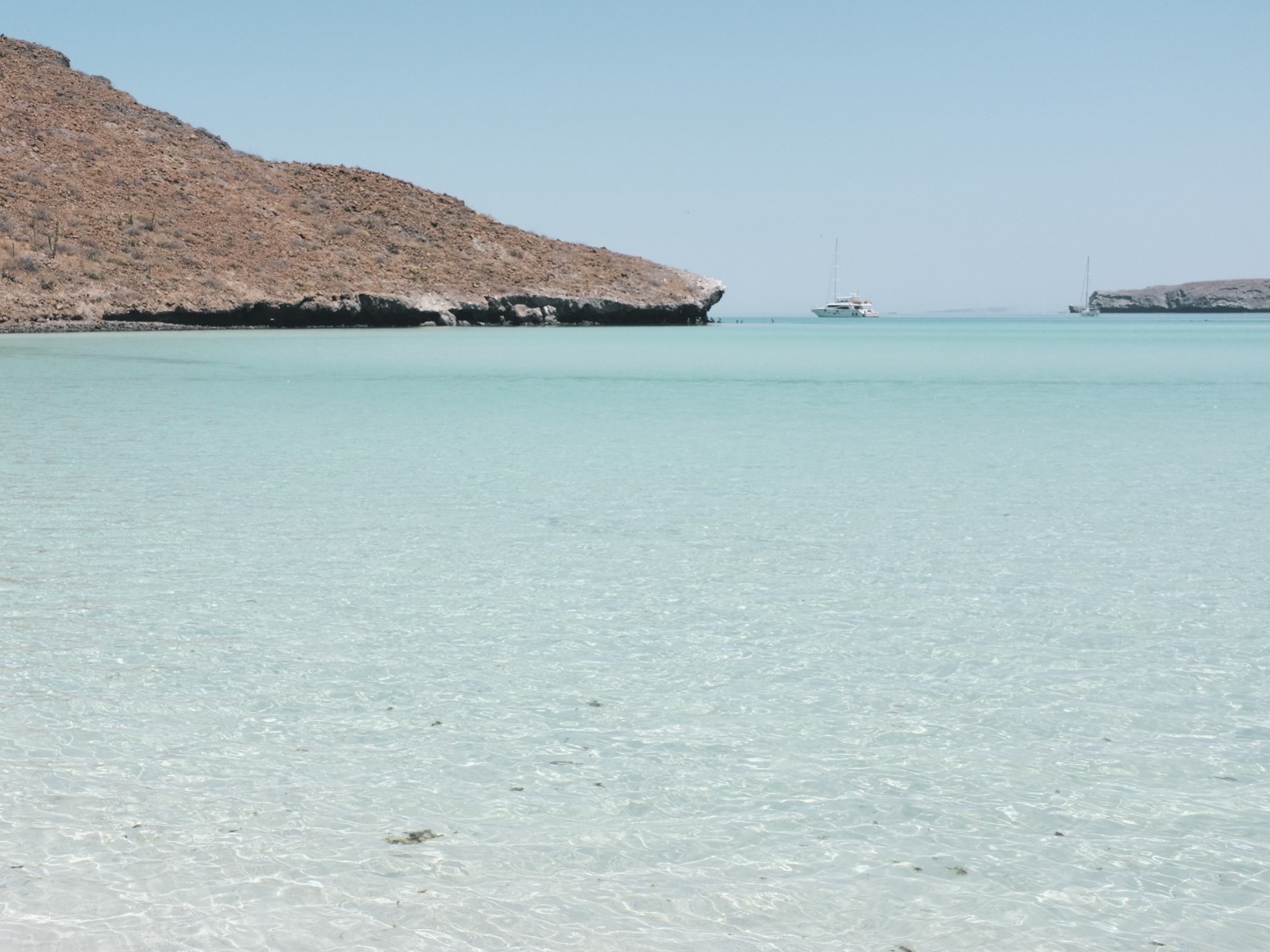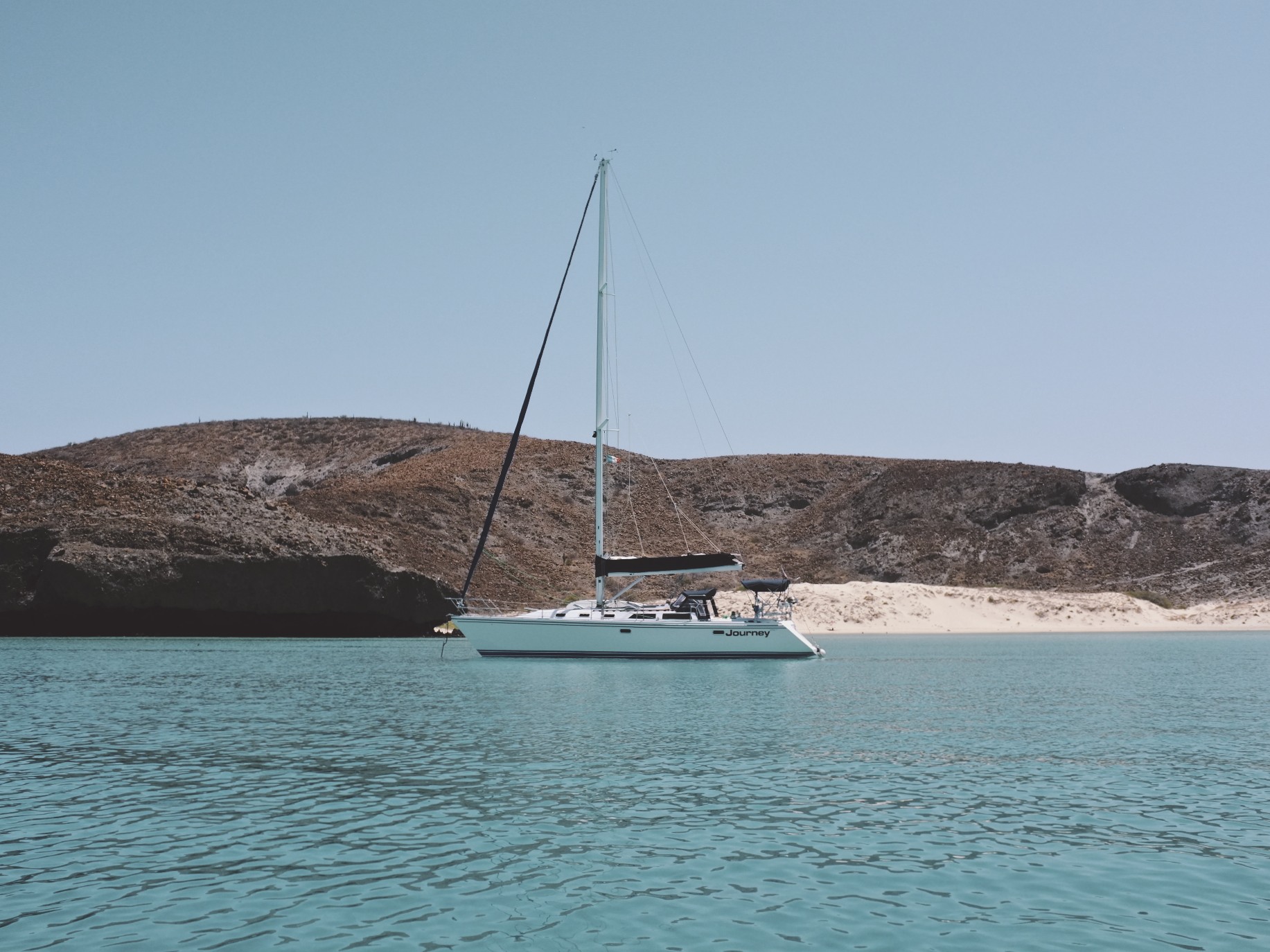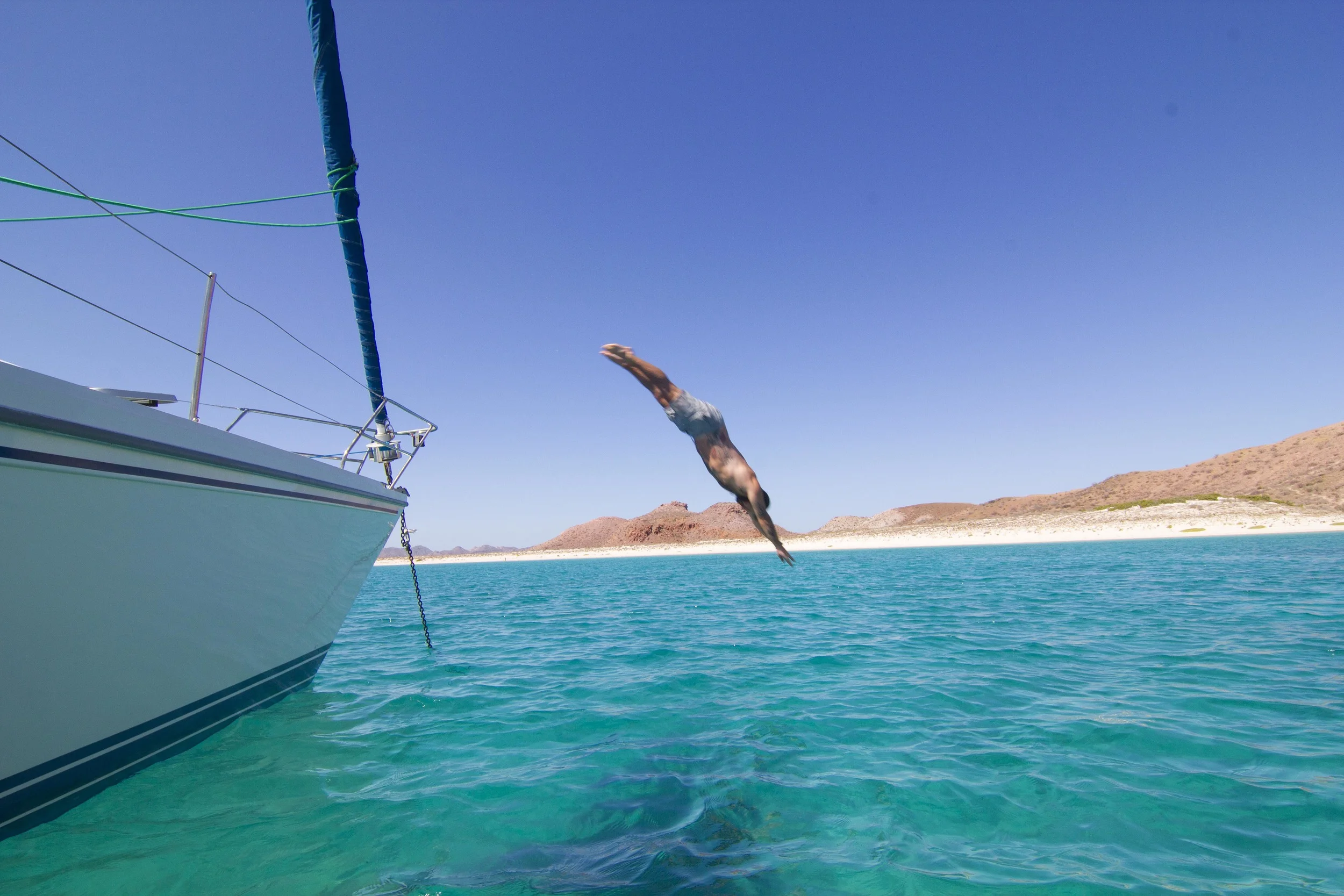After a couple weeks at Marina Paraiso up in Isla Mujeres, we set sail early Sunday morning for a little trip of just under 60 nautical miles to Edward Blair's more permanent marina, Puerto Aventuras. It was a great day for sailing, heading mostly wing-on-wing all day, although the winds could have been a bit stronger... until they were too strong.
An isolated shower we saw on the shoreline near Punta Maroma formed into a real storm that didn't catch us off-guard. We reefed early and still heeled almost 30° before bringing the genoa in. If you know the area, the Yucatan Channel is a current that runs strong and to the north, the opposite direction we wanted to go. It cuts in close to Punta Maroma and is almost impossible to avoid it there without cutting too close to shore.
On a port tack run, the wind lifted, coming around our stern, jibing and became a starboard header putting us into a beam reach. Good thing we were sailing with a preventer put out off the boom. It happened fast and I didn't have time to check our anemometer but the wind felt like it was gusting above 25 knots as we rode up, cutting through peaks and surfing down the backs. The storm didn't last long, but it was the most fun we had all day.
To make good time and fit the plan to arrive with some daylight we motor sailed the entire way at points making over 7 knots on our 32' Morgan and an estimated time that would get us in just before sunset to a new marina with a relatively small mouth, surrounded by rocky points.
As things go with schedules and sailing, the wind had all but completely died some ten or twenty minutes prior, and for a still unknown reason our engine shut down close to a rocky shore directly in front of the mouth of a giant commercial shipping marina.
A large container ship docked to our starboard and another commercial ship coming out. The wind had died. We pointed away from shore to catch a bit of a broad reach as the sails luffed, slightly pulling us away from shore and into the Yucatan Channel.
After jumping down into the cabin as fast as I could, checking the Racor, water strainer, fuel tank and everything I could on the engine in a rush, there was nothing I could immediately see. We thought even though it didn't grind to a halt that it could be something in the prop. After all, it wasn't two weeks ago that we ground out the engine wrapping our prop over one of hundreds of lobster traps off the coast of Key West in the pitch black. I hung off the back of the boat then and cut us free. I threw the remaining line down to the depths of hell.
Back to present, I grab my mask and tie a bowline as quick as I can around my waist and Katy cleats me off to the stern. We are still in front of the mouth of this shipping channel and dock. I dip into the sea, tied to the boat knowing that line had better hold. We're in a current with no power and two sails that won't do much good in these conditions. Nothing in the prop. After five or six attempts, the engine starts but does sound like it needs a little more throttle to get to the same power it did at lower RPMs. I throttle it in neutral, bring it back, throttle it in forward, bring it back, throttle it in reverse. The Yanmar kicks itself back into gear and we're starting to move from negative knots back up to 3, 4, then 5 as a ship passes us closely just as the engine begins to work again. There is no way we're making it to this new marina by sunset. Get me a beer.
We made it to Puerto Aventuras just after dark and our good friends Mack and Lisa, who are true blue, whipped out of the marina in their Zodiac and guided us in through the narrow channel into a temporary slip in front of Mack's 72' yacht, Piratas de Tejas (Pirates of Texas). After tying up from a trip like that, you know drinks are the first item on the agenda.
Mack runs a charter company down here in the Mayan Riviera, h2Oh! Sun Cruises. Hands down they have the best tours in the Mayan Riviera if you're looking for a day at sea. Whether it's with a group, private, fishing, snorkelling or whatever you please, they're your best option.
Mack has been a great friend to us, and while we were away, helped set us up with the perfect slip in Puerto Aventuras, with close access right to sea. We've been travelling almost non-stop since April or May of this year, so it felt good to get back to somewhere familiar, see friends and enjoy cold drinks and food together.
At least for now we'll get three days of normalcy before heading off to Mexico City on a work trip for our beer distribution business, Casa Barriles, followed immediately by a visit to see family up and Providence and then catch a show with Future Islands and The National in Boston followed by a Jays game at Fenway.
It's good to be home in Mexico. If even only for a moment.
Sunrise at Sea in the Gulf of Mexico
Katy put some words down about our recent trip from Florida to Mexico. Specifically about this one day that was pretty special out there. Here they are...
This photo was taken on our way to Key West, alone in the Gulf of Mexico with no land or other boats in sight. It's hard to describe how magical that morning was, but I can try.
We awoke for our 4am shift to layers upon layers of stars twinkling in the sky. The moon was nowhere in sight. I don't know if I've ever seen so many stars at once. We were so far away from even the smallest hint of light from land, with countless shooting stars zipping through the sky.
The water was like glass, smoother than any bathtub. It looked like we were in outer space with the reflection of the stars on the water, not knowing where the sky ended and the ocean began. As our boat cut through the water, phosphorescence lit up in its wake. I took a paddle and dragged it through the water for the better part of an hour stirring up more of them, mesmerized by the beauty of it all.
And then came sunrise. We saw a few dolphins playing in the distance as the stars started to disappear and the sky became brighter. Later in the crossing, a pod of about 40 spinner dolphins came to play at the bow of our boat for almost half an hour, jumping straight up out of the water, spinning and splashing back down, showing off.
As the sun rose higher in the sky we noticed we were passing several huge jellyfish as big as your head, floating in the glassy water. We ended up passing through hundreds, maybe thousands of them. We just sat on the side of the boat and watched them pass by as the sky became more colourful and the sun rose higher off the horizon.
We had a baby. It's a boat.
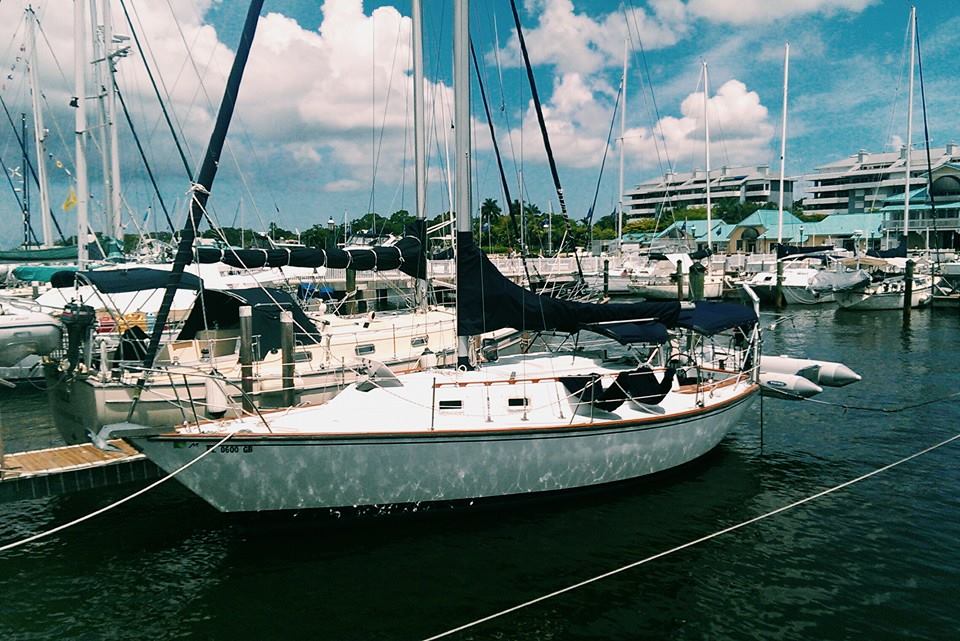
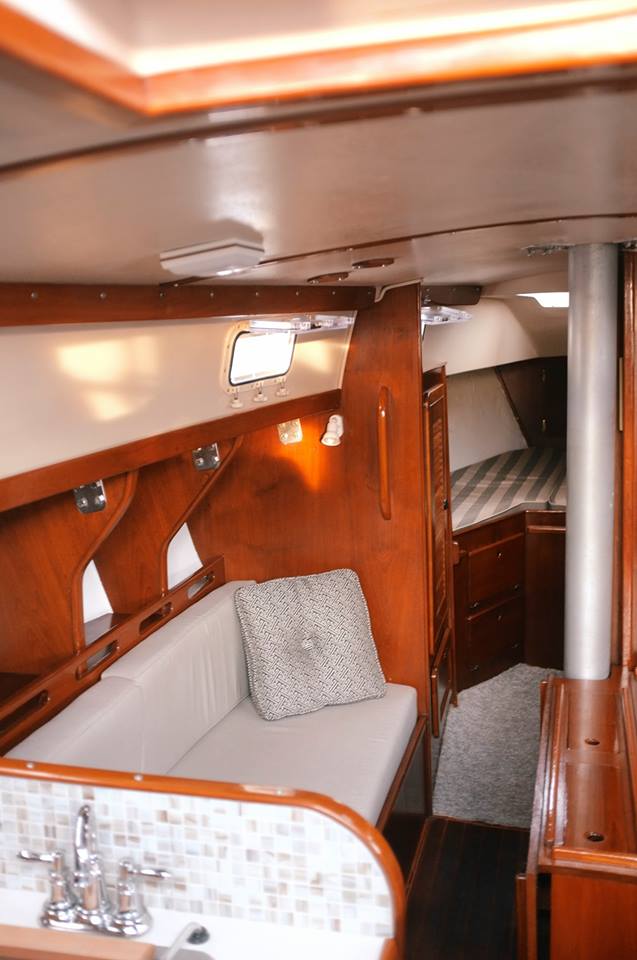
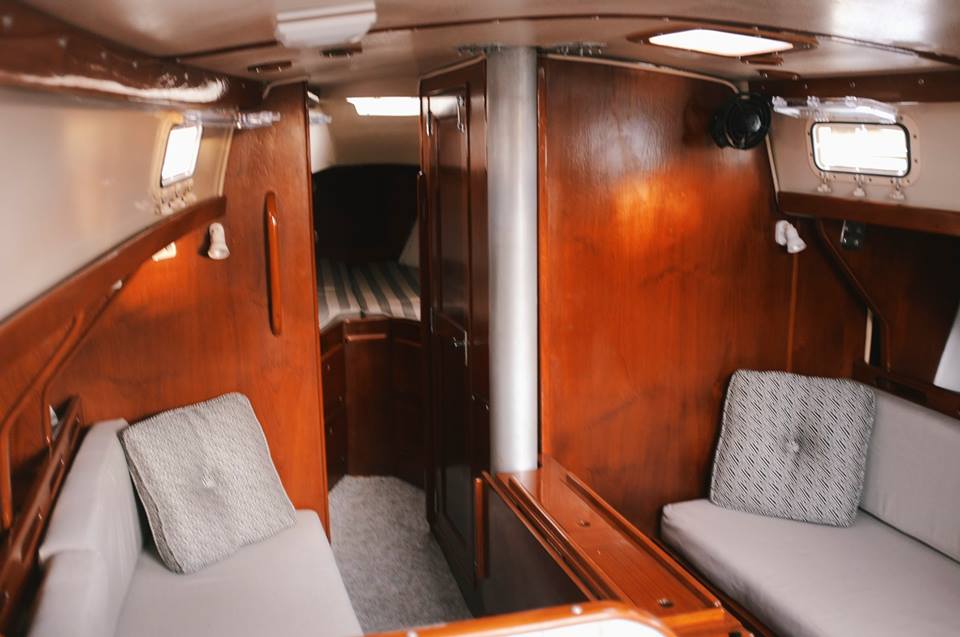
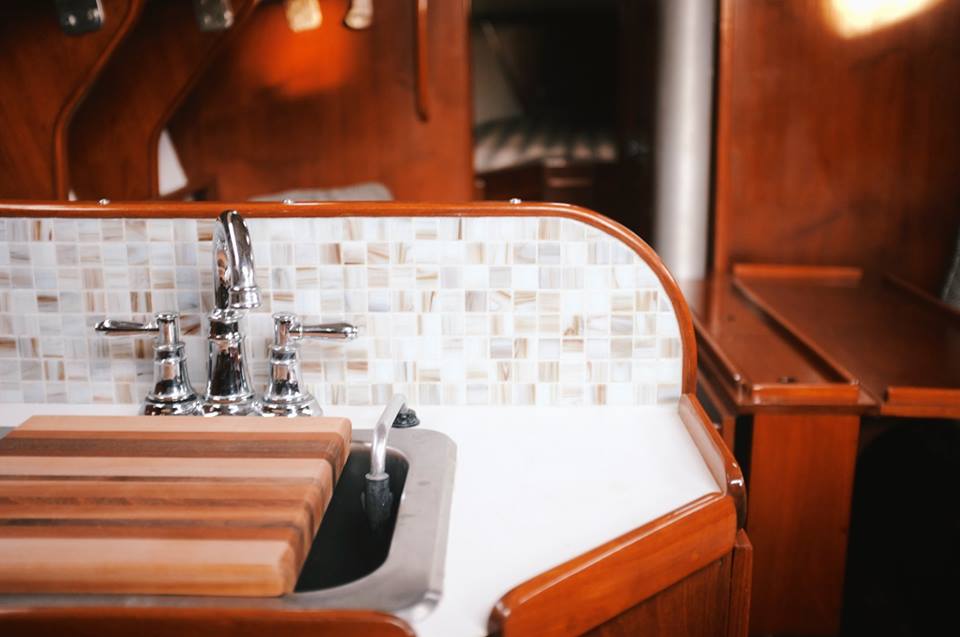
Last month we bought a boat. A wonderful Morgan 321, designed by Ted Brewer. It was a bit longer of a process than how simple and declarative that sentence is, but that was the result. We bought a boat. It was a well thought out period of research, hard work, saving and more of the above, repeated.
There will be some posts coming up where we outline some specifics for those of you who are considering the same, or have even done so yourselves. We have detailed documents and spreadsheets that will be worth sharing about the costs and time it takes to complete a project like this, because buying a boat is a serious project as much as it may simply be seen as some kind of dream realized.
Our boat, Edward Blair, came almost completely bare bones. We had the functioning parts you want to see in a purchase like the obvious, sails, lines, a successful sea trial and survey, autopilot, depth sounder, compass and all the top list checkpoints. What it didn’t have was anything else. No safety gear, no kitchenware, tools, cleaning supplies, a few dock lines, two old fenders, nothing, forget even mentioning provisioning for food and survival offshore. Empty everywhere. What it was without wasn't a problem. The boat was perfect and in mostly turnkey condition.
A big question in cruiser forums from those looking to buy their first sailboat is, “How much does it cost to get a boat ready for cruising and living aboard?” We have a good answer for a relatively common size range, because we just did it from the ground up. So from what we have, you’d be able to subtract what your potential new boat may have, and what you’d have to buy. We have links to the products we bought, reviews, pictures and more.
Life is just a bit busy now getting back to reality after two months of hotels and travel to get Edward Blair into offshore condition. When moments become available, so will posts with details.
We took E.B. from Apollo Beach in Florida down to Palmetto where we lived for a month doing some relatively extensive engine work, outfitting and preparations. After our time in Palmetto was complete and it was time to get going, we sailed south over 620 nautical miles along Florida in the Gulf of Mexico through to Key West to refuel and restock, out to Dry Tortugas and south to Cuba’s coast where we headed west across the Yucatan Channel into Isla Mujeres, Mexico.
We’ve been in Isla Mujeres for over a week now, and plan to head north to Isla Contoy before turning back south to Puerto Aventuras where the boat will live as a more permanent fixture, exploring the Mayan Riviera of Mexico before another big adventure next year.
Crossing offshore waters in a 32’ boat might not be so bad if the conditions are right, but crossing them in this Morgan was especially comfortable given its design and ability to work both as a coastal cruiser and relatively sound offshore ship. While it may not be your best bet for a major ocean crossing, a week at sea was nothing but proof of Ted Brewer’s sound design in cutting 10’ swells through the Yucatan Channel and challenges of getting knocked sideways across the Gulf Stream. We did mostly have smooth sailing, but we saw some worthy challenges.
So, last month we bought a boat, and the fear inducing saying, “The two best days in a sailor’s life are the day (s)he buys a boat and the day (s)he sells it,” couldn’t be further from the truth. Each day seems to get better as does our understanding of the scope of work involved and the desire to keep improving the boat and our own skill set, which already feels like the strong beginning of a lifelong commitment to something as special as sailing wherever you can point your bow.
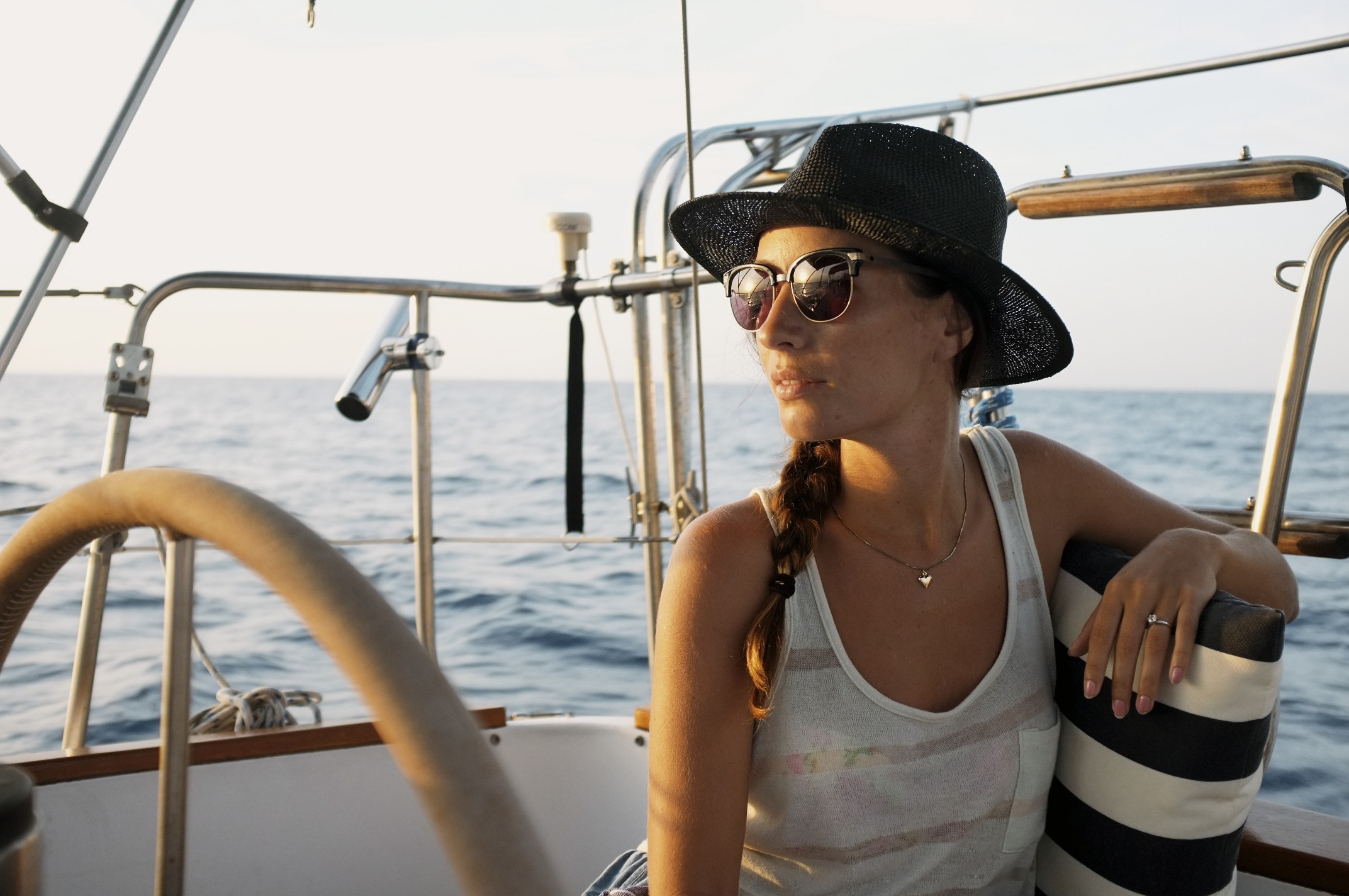
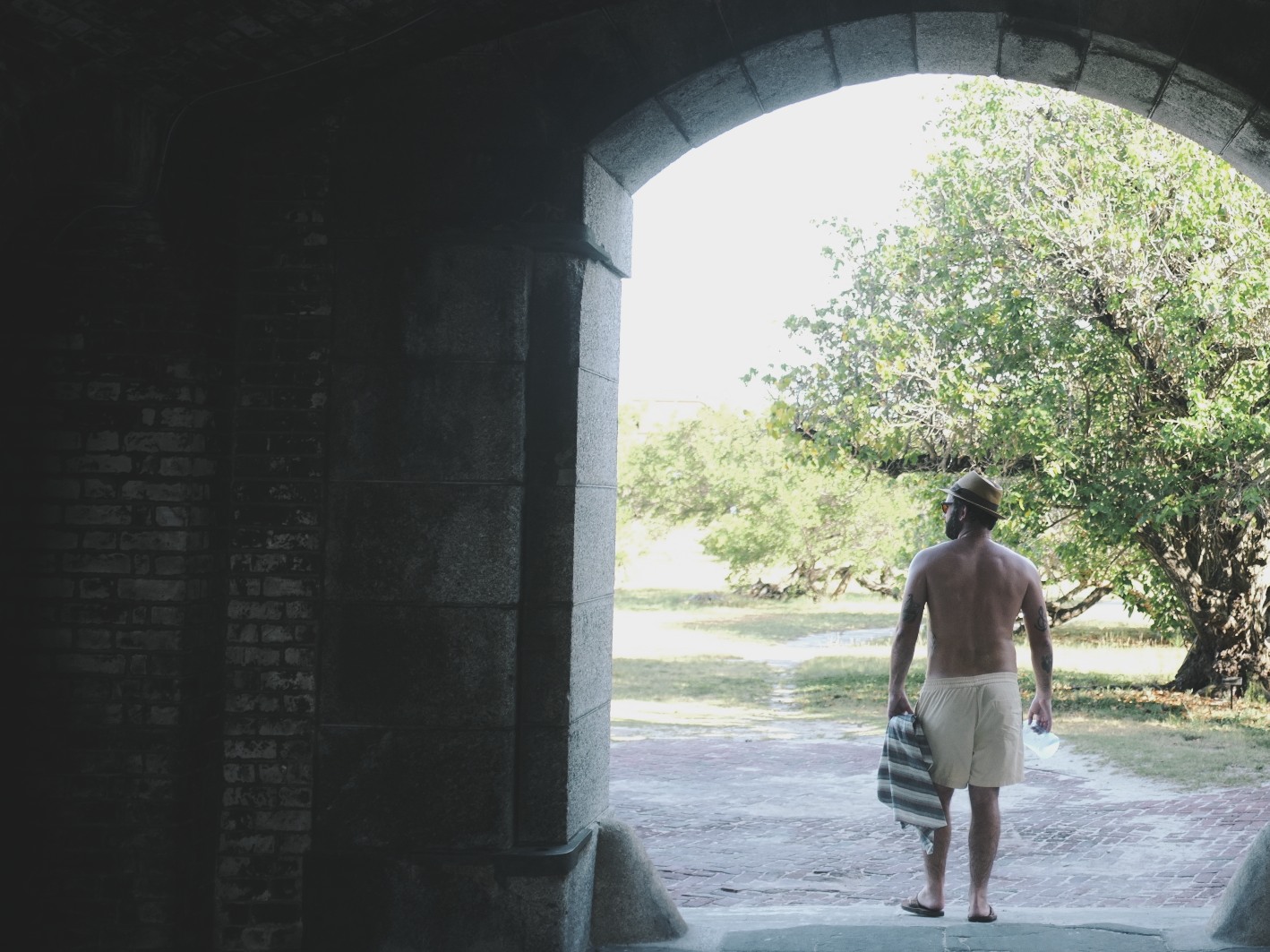
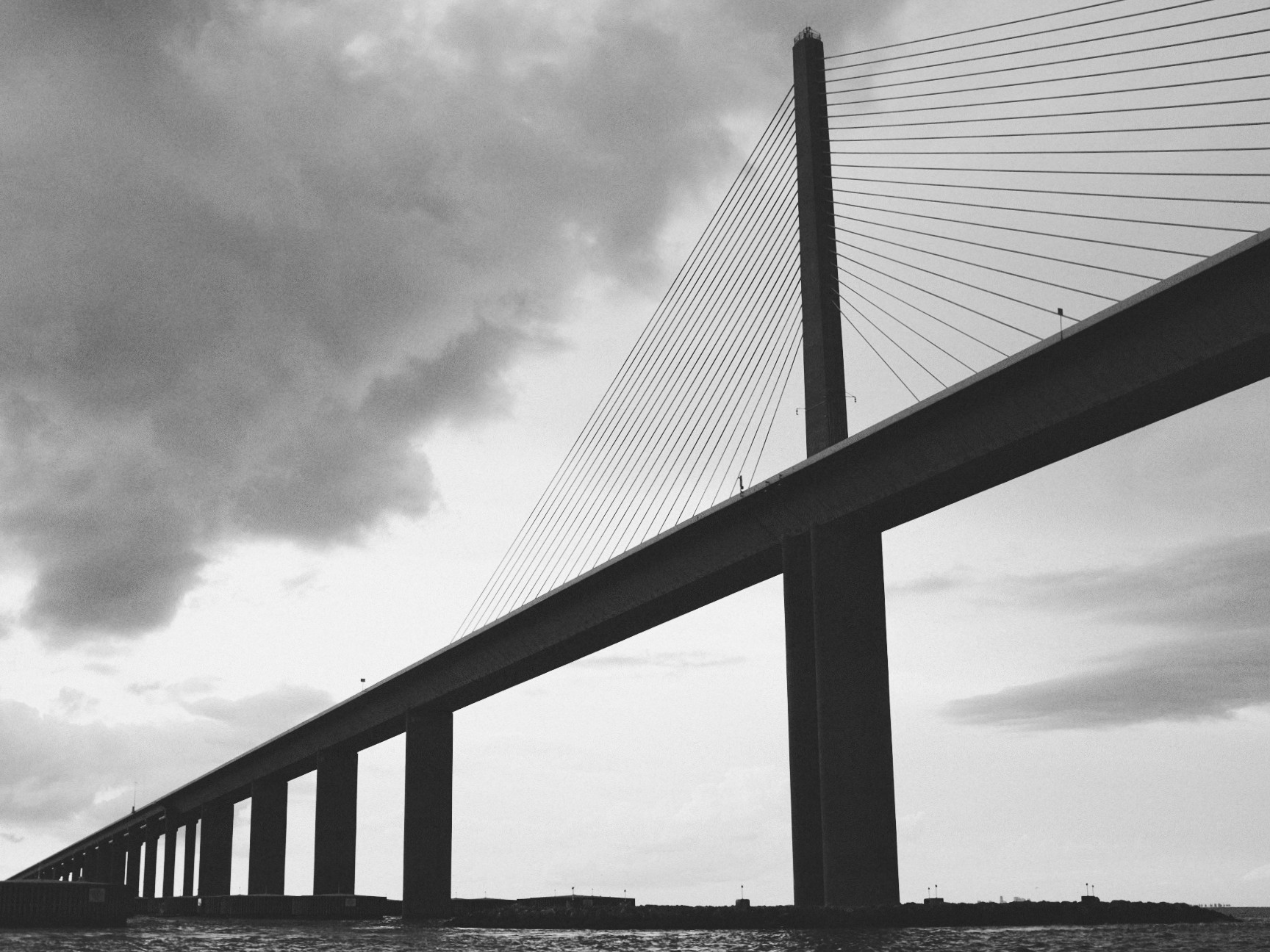
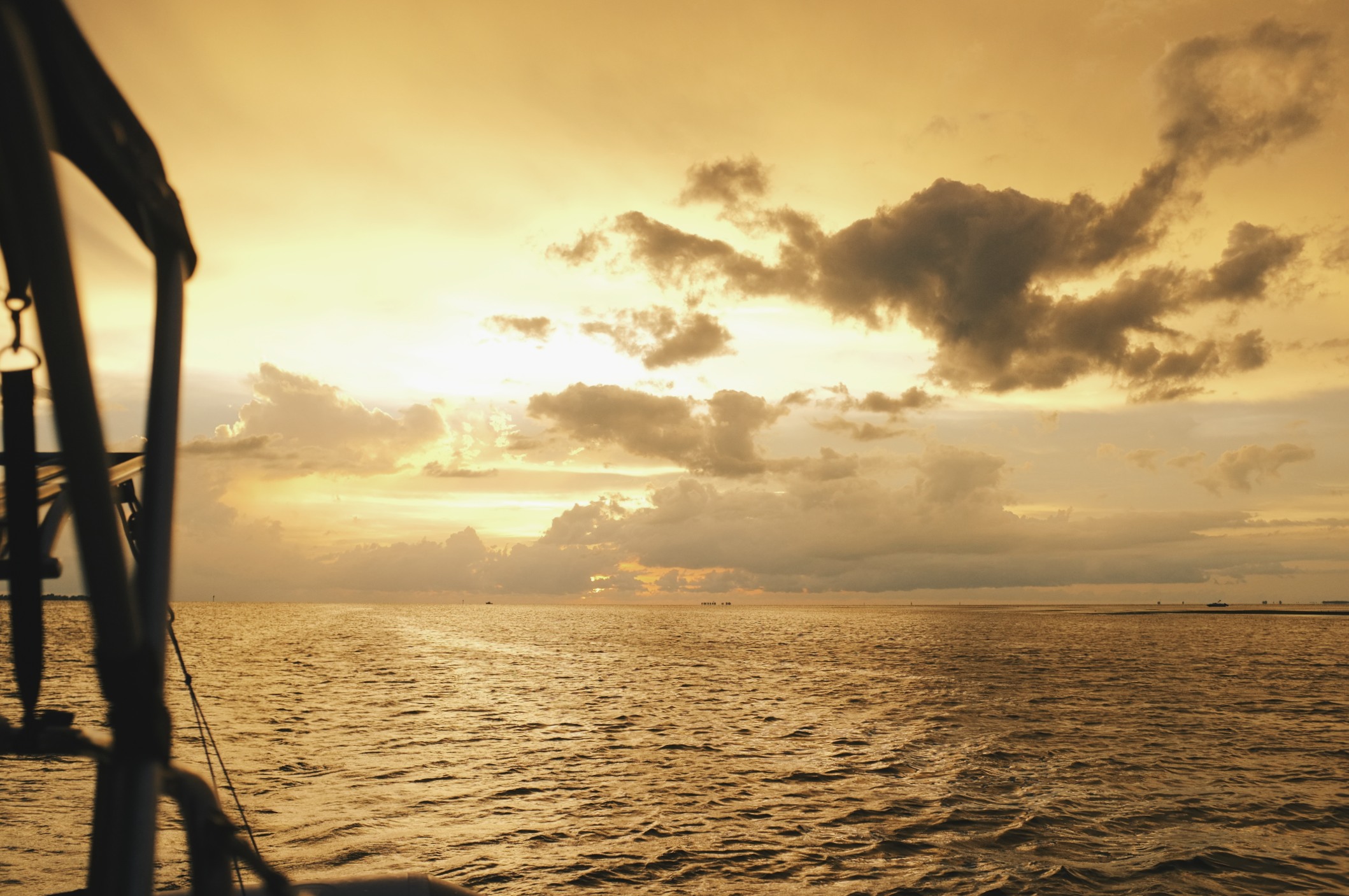
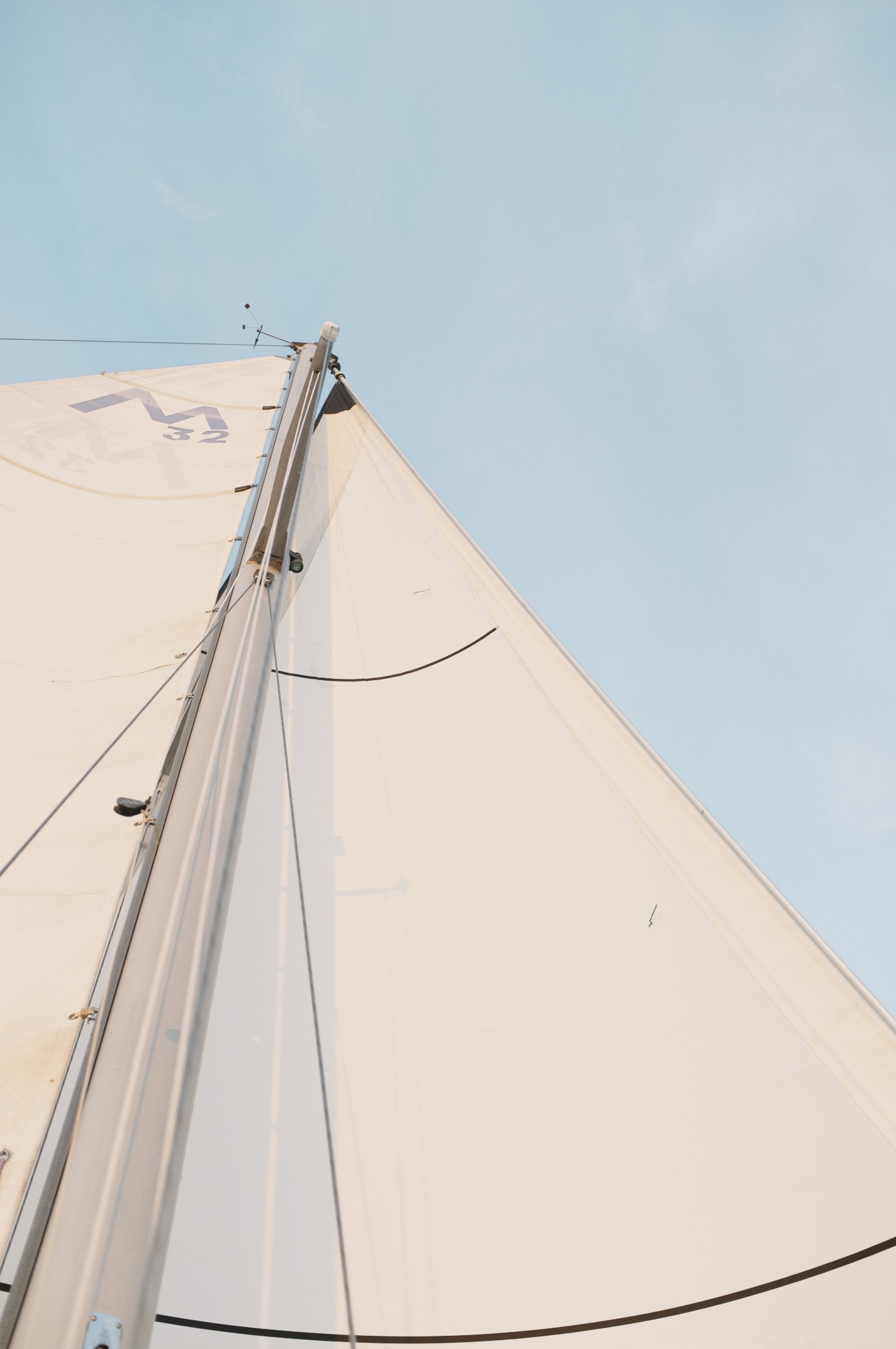
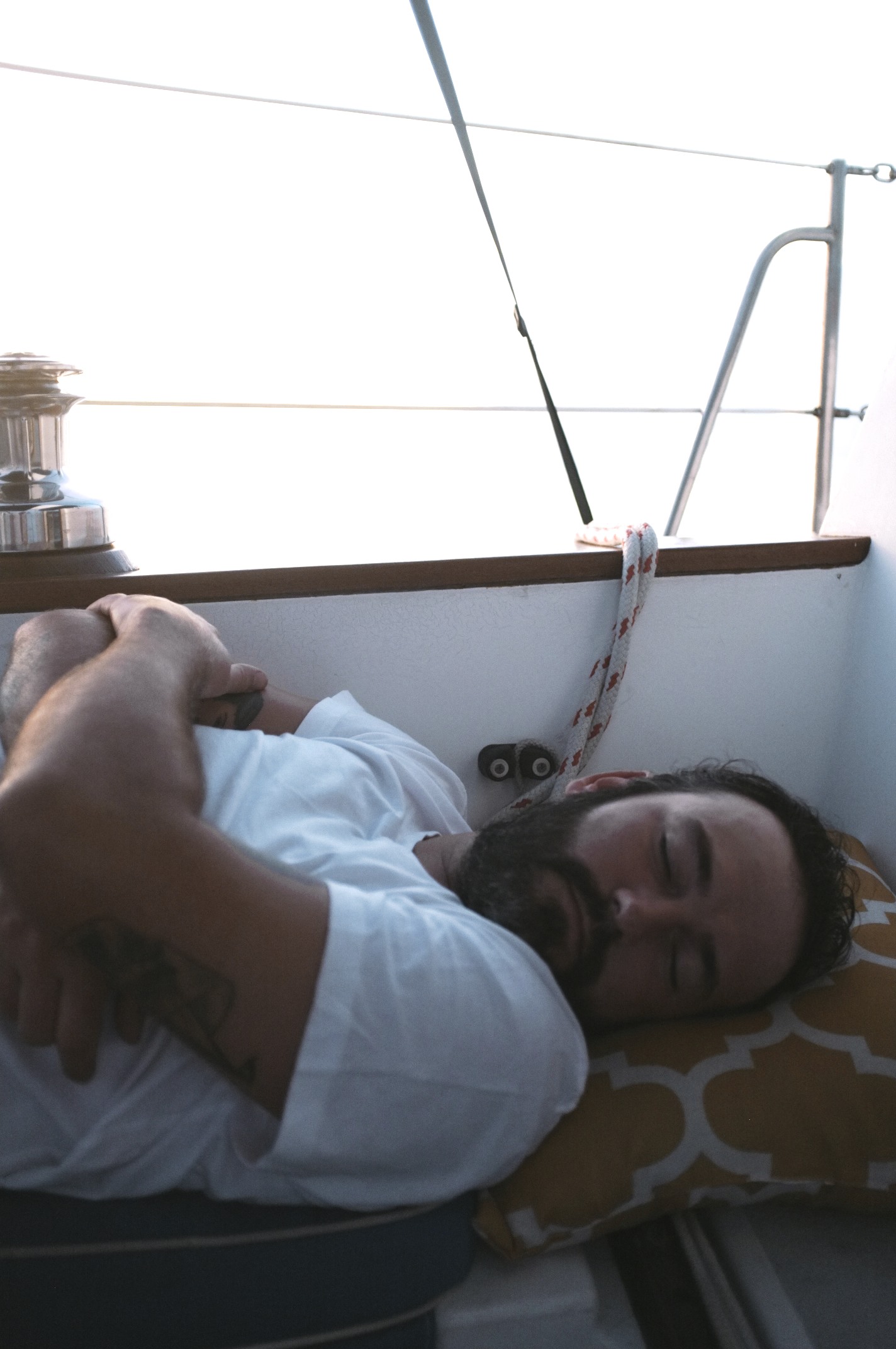
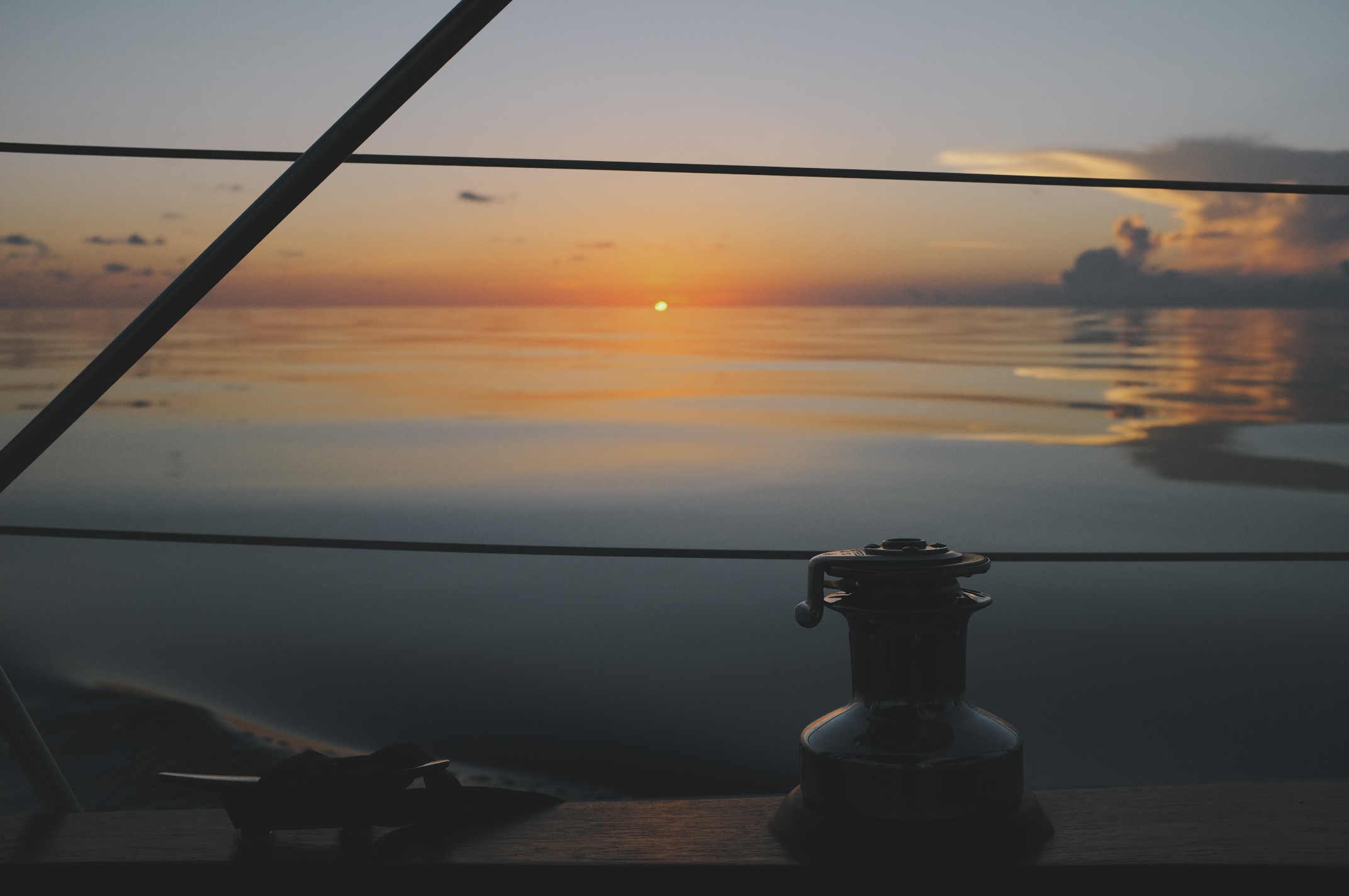
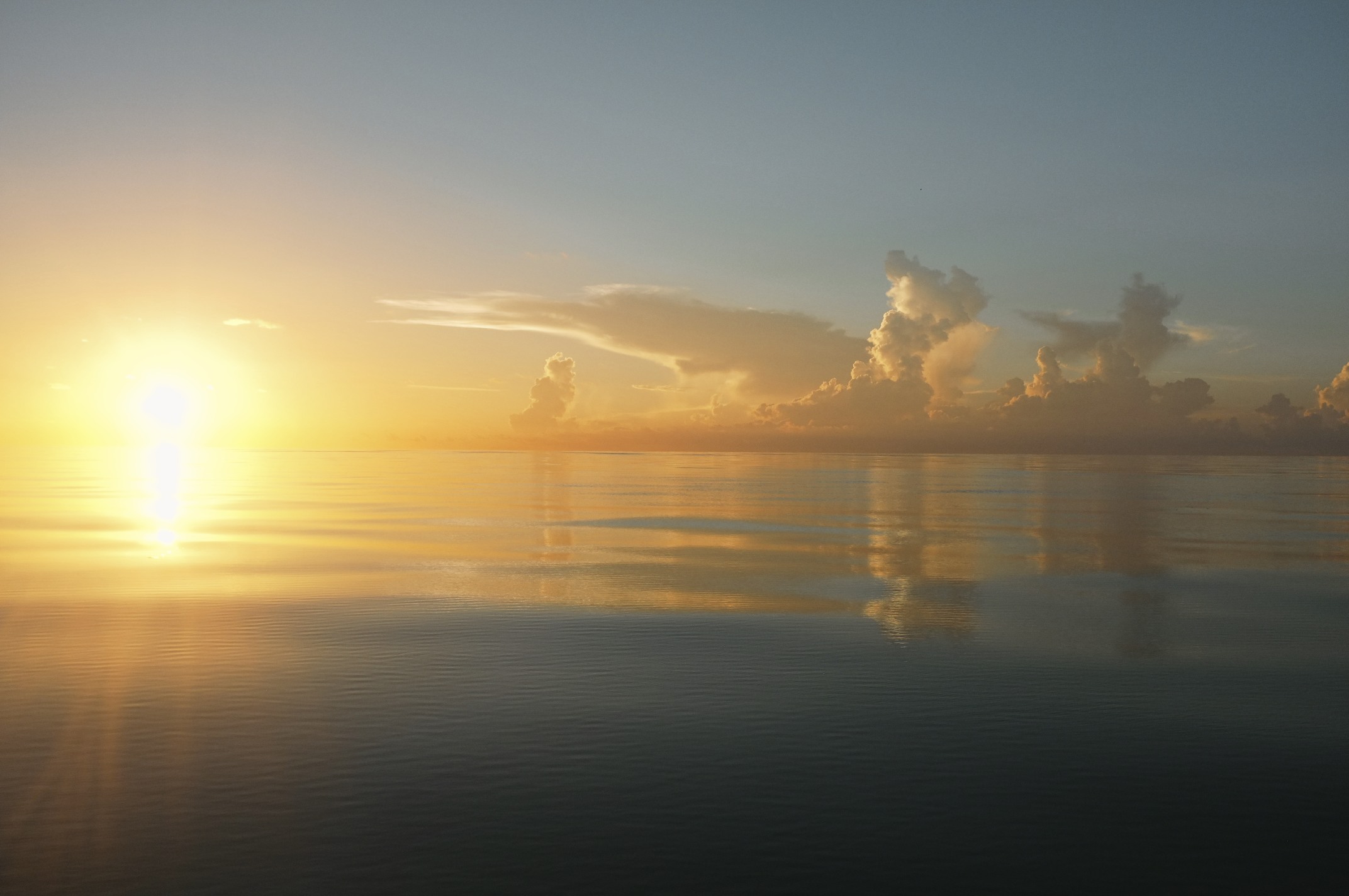


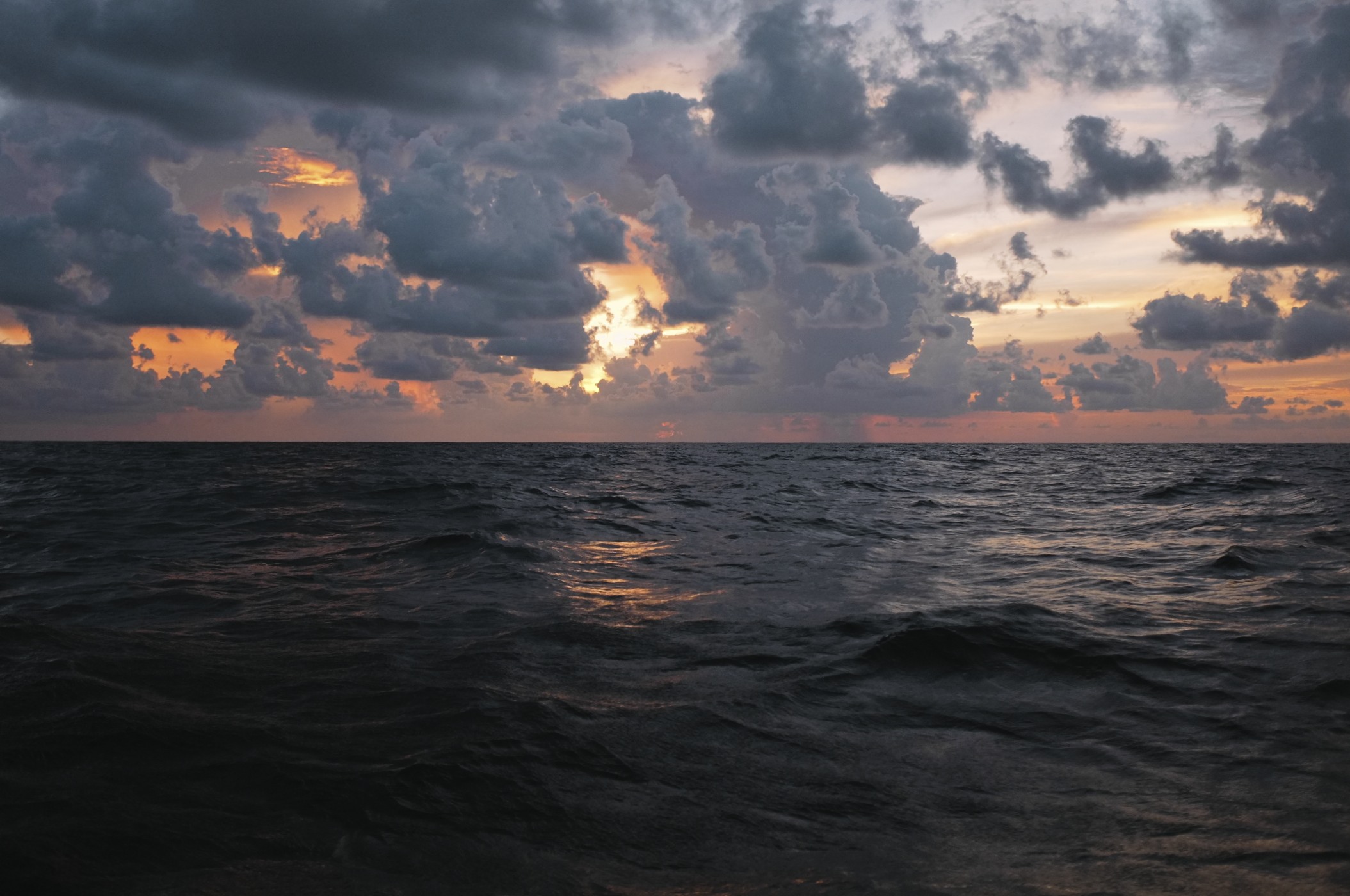
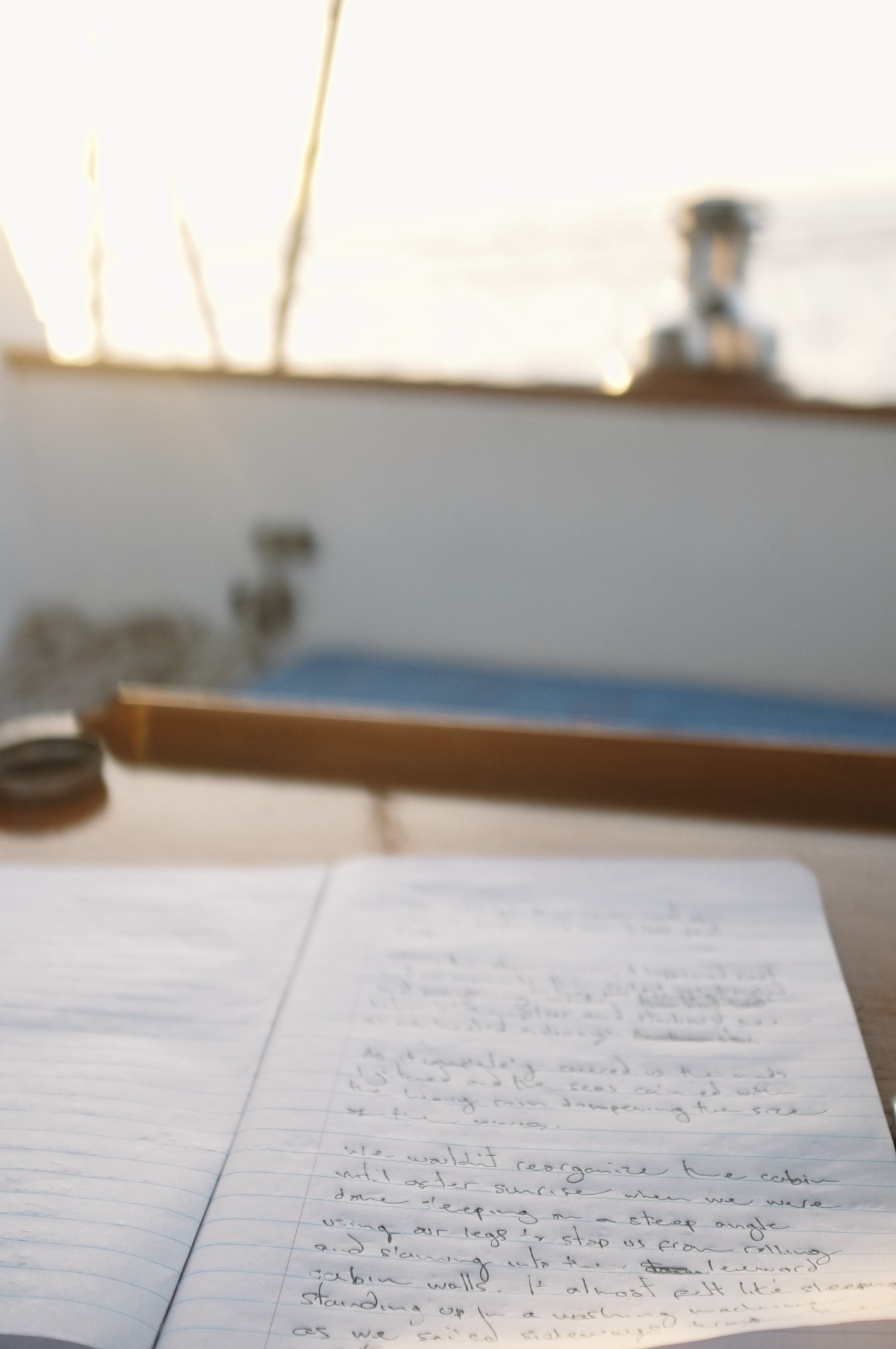
Sea Lions and the Sea of Cortez
From La Paz, north past Los Islotes and up to Isla San Francisco, we sailed and we swam. Sometimes there were sea lions, sometimes it was just the clear blue waters and white beaches.
We hiked mountains, walked through cactus forests and drank at anchor. If you find yourself an opportunity to spend time in the Sea of Cortez, you should do so without hesitation.
Sailing The Sea of Cortez
Part of a Story
While at sea for days on end, you quickly accept that your schedule is to be arranged by the sun. At first light, you’re alive and on deck watching it rise with a small breakfast before lifting anchor and on through the next passage. After sunset, you can survive a bit with drinks and the moonlight, but with a day of sun, sailing and labour, the reset button becomes your closest friend.
Through the week we sailed north past Espiritu Santo and Isla Partida. We anchored in the quiet, protected bays of Ensenada del Candelero, Ensenada Grande and past the sea lions of Los Islotes on a passage to The Hook on Isla San Francisco.
At nights alone, after the sun and food and wine had put the others to bed, we’d lay on the bow, staring up the mast into the full moon. We'd think of a whole world, somewhere out there going on without us. Like playing hooky from school, you know the classes go on, but you don’t care.
Somewhere far away that you couldn’t see or really even imagine, things were happening. Clocks were being punched, taxes were being paid, and we belonged to none of it.
* * *
Read the full version of our On The Road post for Lifetime Collective here.
“It would be good to live in a perpetual state of leave-taking, never to go nor to stay, but to remain suspended in that golden emotion of love and longing; to be loved without satiety.”
— John Steinbeck, The Log from the Sea of Cortez
The Certification
It's been a long standing goal of ours to get onto the water in a proper manner. Sure, we love days spent at the beach swimming in and around the Caribbean, but from there you’re simply visiting. You’re not really a part of it.
In certain locations you can volunteer in regattas, you can head out with friends that may have connections. Rent lasers, take courses. Plenty of opportunities in many places. Not as much where we are located in the Mayan Riviera. Limited sailboats along the coast, zero instruction to be seen and a regatta once a year around Cozumel don't exactly lend themselves to accelerating towards your dream.
So began the search for some type of accreditation. Some type of instruction where we didn't have to be away from work, home and our functioning lives for too long. Through Taru and Alex at World Tour Stories, we heard of Nautilus Sailing. A company that does live aboard courses to certify the likes of us through to ASA 101, 103 and 104. Ours was a seven day live and work adventure through the Sea of Cortez that ended in us having ASA certified signatures as captains.
True, it is hard to believe you could become a captain after only seven days at sea. But it is also true that any goal could only stand to become what you make of it. We studied ahead of time for months. Reading the required three textbooks before even stepping aboard, and even covering two or three other text books, among those a several hundred page guide solely dedicated to wind and trim.
We also worked on fundamentals, mostly on Hobie Cats at the beach next to our house. Hobies may seem like a subpar vessel selection to tourists who'd rather jet ski across your bow or be towed behind a panga while parasailing. In reality, they are great in the purest sense of fundamentals. No large boat will have the feel of wind and wave like sitting in a little Hobie 16', one foot above the blue Caribbean Sea. Trial and error on the Hobie, going home reading, going back out, was a solid foundation for us.
The course with Tim from Nautilus was something special. Before, during and even since, Tim has put up with my inquiring nature. I ask a lot of questions and may or may not write long, drawn out emails. Once we sat with Tim at Marina Palmira, meeting for the first time in person, we got along.
After a week at sea with someone, you get to know them about as well as you could. Condensed living quarters, 24 hours a day together. It's a recipe for familiarity. In the time spent with Tim, I know we are now all friends, and along with the certification, that's one of the most important things you can gain during a week like that.
After the written exams were completed, the practical skills were approved and it was time to step off Journey, the 42’ Catalina, both Katy and I actually felt a genuine sense of sadness. Not yet. We’re not ready to stop yet. It turns out that sadness might have just been Mal de Debarquement, land sickness, which stuck with us for four days, maybe five. If you have never had land sickness after being at sea for an extended period of time, basically the world becomes a washing machine for days. We’d wake up in a hotel room, sure we were rocking in high seas, only to open the blinds to a stable horizon.
Mal de Debarquement is the nauseating brother of better days at sea. When it was finally gone, we could at least temporarily put great adventure behind us and get back to reality.
What’s next? Get back to sea as soon as possible. A few days from now sounds about right.
If these photos look good to you, which is likely for anyone with blood in their veins, and you find that sailing might be the life for you, please put down everything and talk to our new friend Tim at Nautilus. Maybe, not only will you end up with an entirely new skill set, but it just might change your life.






